Trees Falling on Garth Road
- Details
- Written by: Joanne Wallenstein
- Hits: 4704
 We received the following email from Jay of Lulu's Cake Boutique on Garth Road, who was concerned about the condition of trees on Garth Road. In turn, we emailed the Department of Public Works and when then did not respond we asked the Village Manager's Office: See their answer below:
We received the following email from Jay of Lulu's Cake Boutique on Garth Road, who was concerned about the condition of trees on Garth Road. In turn, we emailed the Department of Public Works and when then did not respond we asked the Village Manager's Office: See their answer below:
(Received on August 13 from Jay:) Do you know a huge tree fell down on Garth Rd last night and almost hit someone while they were driving? I've told the village about the trees that are ready to fall down and hurt someone and they have done nothing about it. I was hoping you could write about and maybe they will act up before God forbid something terrible happens. It's a serious problem that can be avoided.
Hope you are well,
Jay
From Josh Ringel, Assistant to the Scarsdale Village Manager:
I apologize that no one had responded to your earlier email regarding a tree falling on Garth Road... I followed up as to your request and received the following information from DPW:
- The request received was that a large branch had fallen near the hair salon (near the 711) on Garth Road. The surrounding trees in question were looked at by a member of the Village of Scarsdale Highway/DPW department on 8/14.
- In the interest of immediate public safety, DPW did prune trees along the West Side of Garth Road.
- However, all the trees on the West Side of Garth Road (from Popham Rd to the Eastchester Line) belong to Westchester County and are the responsibility of the County.
- The Village has alerted the County Parks, Rec & Conservation department that the trees need to be inspected by their arborist ASAP.
Please let me know if you have any further questions regarding this matter.
Summer Gift Ideas
- Details
- Written by: Joanne Wallenstein
- Hits: 5691
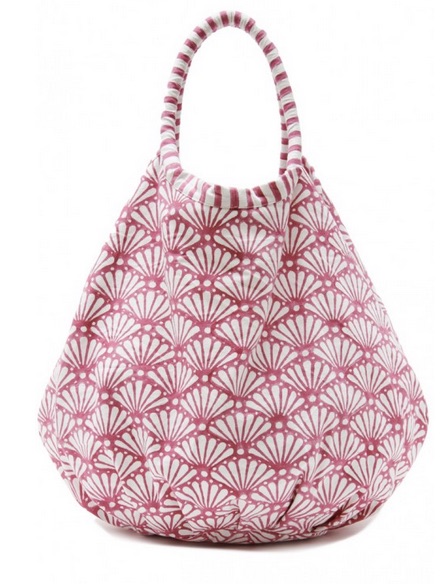 Summer birthdays, barbeques and visits to summer homes often call for summer gifts. We've been giving and receiving quite a few lately, and here are some nice gift ideas for the waning weeks of August.
Summer birthdays, barbeques and visits to summer homes often call for summer gifts. We've been giving and receiving quite a few lately, and here are some nice gift ideas for the waning weeks of August.
Indian summer prints from Roberta Roller Rabbit:
Roberta Roller Rabbit has a store in Greenwich, stocked with clothing, accessories and home goods all made with their brand line of colorful Indian prints. A gift from Roberta Rabbit always brings a smile.
Check out this 100% cotton canvas beach tote, printed by traditional artisans in India. Natural variation is celebrated! And see more at Roberta Roller Rabbit at 103 Greenwich Avenue in Greenwich.
Zinneas
A summer bouquet from Ramsey's Farm: Scarsdale is fortunate to still have a real farm in our zip code where they grow the most beautiful flowers. Their zinneas brighten our day. Stop by Ramsey Road and pick up a bunch for yourself or a friend.
Summer Rose:
Summer is the season for rose, and Zachys has a good selection of rose from the classics of Provence, France, to modern interpretations from the USA, Spain, Italy, and beyond. Here are two of their favorites for summer gifting and drinking:
Bandol Rose Terrebrune 2014 (750ML) {#397611}, $36.99, $31.44 91 Points, Jeb Dunnuck, Robert  Parker's Wine Advocate: "Light pink/salmon in color, with classic orange blossom, melon and tangerine aromas and flavors, as well as that salty minerality that's common from rosé from the region, Domaine Terrebrune's 2014 Bandol Rose is medium-bodied, juicy, rounded and nicely textured, with bright acidity coming through on the finish. It's a beautiful rosé to drink over the coming year or so."
Parker's Wine Advocate: "Light pink/salmon in color, with classic orange blossom, melon and tangerine aromas and flavors, as well as that salty minerality that's common from rosé from the region, Domaine Terrebrune's 2014 Bandol Rose is medium-bodied, juicy, rounded and nicely textured, with bright acidity coming through on the finish. It's a beautiful rosé to drink over the coming year or so."
Soter North Valley Rose 2014 {#397903}, $24.99, $21.24"... has an almost electric, purple-tinted color in the glass, offering up very forward aromas of fresh cranberries, with bright cherry blossom and red currant notes. On the palate, the wine delights with more red cherry flavors, along with honeysuckle, lemon zest and blueberries." –Winery
Gifts for the modern home from Current Home:
Current Home on Palmer Avenue in Scarsdale has a wide variety of summer gifts perfect for outdoor entertaining. Pictured below:
- Wave Acrylic bowl (from Australia)
- Outdoor ice buckets in bright colors
- Fun cocktail napkins with edgy sayings like: "blah blah blah" "pool, grillin and chillin"
- Napkin rings and napkins by table top designer Kim Seybert
- Melamine plates that look like they are ceramic
Prices range from $24-$200 dollars.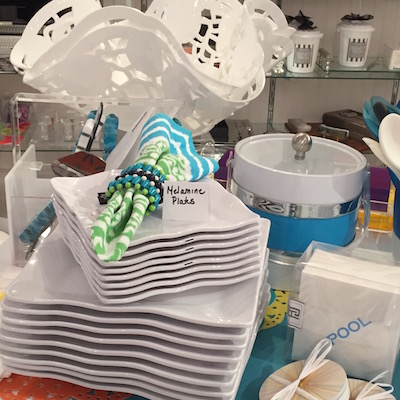
25 Ways That You Know You Live In Quaker Ridge
- Details
- Written by: Zoe Frishberg
- Hits: 5585
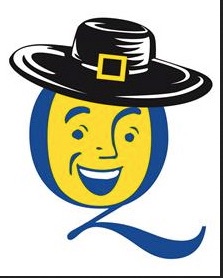 Closer to the town of Mamaroneck than to Scarsdale Village, Quaker Ridge is betwixt and between. Until 1966 it had its own school district, and though now Quaker Ridge kids attend Scarsdale schools, some have a Mamaroneck zip code, get takeout on Mamaroneck Avenue and their parents commute from the Mamaroneck Train Station. Below, SHS student (and Quaker Ridge resident) Zoe Frishberg notes 25 ways you know you're part of this unique identity crisis:
Closer to the town of Mamaroneck than to Scarsdale Village, Quaker Ridge is betwixt and between. Until 1966 it had its own school district, and though now Quaker Ridge kids attend Scarsdale schools, some have a Mamaroneck zip code, get takeout on Mamaroneck Avenue and their parents commute from the Mamaroneck Train Station. Below, SHS student (and Quaker Ridge resident) Zoe Frishberg notes 25 ways you know you're part of this unique identity crisis:
1. You'd rather go to Sammy's Bagels than Lange's for your morning bagel and coffee
2. You spend Halloween at the extravagant haunted houses on Bradford Road
3. In your book, Cherry Tree froyo beats Peachwave froyo
4. No one ever wants to drive to your side of town
5. You have a tab open at Cherry Lawn and the employees know you by name
6. You thought all the elementary schools served hot lunch.
7. When your parents say "the parkway," they mean the Hutch, not the Bronx River
8. It takes 30 minutes to do a pick up at the Scarsdale Train Station
9. You're always the last one in the carpool
10. You know the teacher who cut off students' erasers
11. You buy your Halloween pumpkins at Cherry Lawn or Balduccis
12. You know every shortcut there is to get to "your side of town."
13. You can walk to the Scarsdale Pool – who needs a private pool?
14. A Metro Deli salad can last you an entire week
15. When Cherry Lawn stopped serving froyo your weekend routine changed forever
16. Your elementary school graduation is comparable to a sauna.
17. You get manicures in Mamaroneck, rather than Scarsdale Village
18. There's a drawer full of Mamaroneck Avenue takeout menus in your kitchen
19. Sal's salad pizza is one of the best things you've ever eaten
20. It's quicker to walk to your destination than wait for a Scarsdale Taxi to arrive at your house
21. You still say "Last Licks" when referring to "All Good Things"
22. You remember when Toyo was the only good Japanese restaurant on Mamaroneck Ave
23. You run to Big Top Toys for last minute school supplies
24. PM Pediatrics has saved you an immeasurable amount of time and hassle
25. Exit 22 isn't just an exit... It's a lifestyle
Astorino Spars with U.S. Attorney Preet Bharara Over Progress of Fair and Affordable Housing Settlement
- Details
- Written by: Joanne Wallenstein
- Hits: 7032
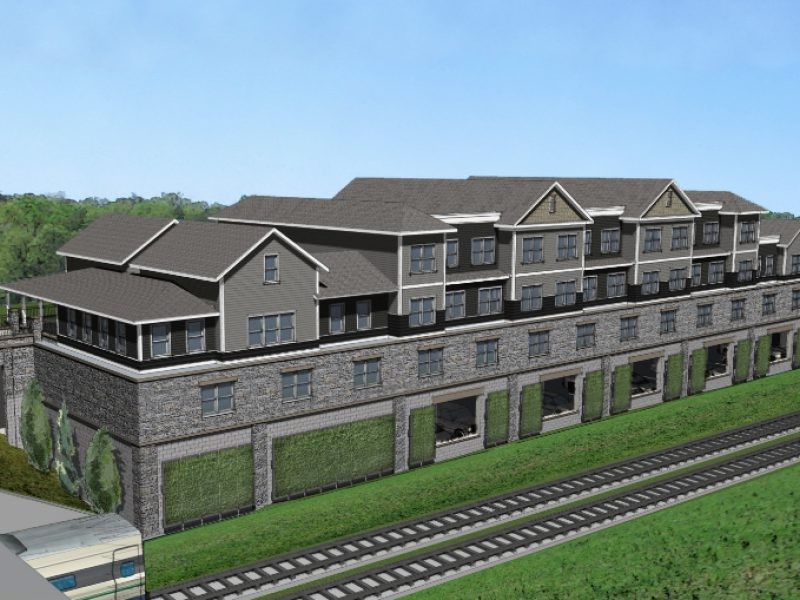 Though Westchester County appears to be complying with the terms of the 2009 Fair and Affordable Housing Settlement, the U.S. Attorney's Office says that Westchester is not doing enough.
Though Westchester County appears to be complying with the terms of the 2009 Fair and Affordable Housing Settlement, the U.S. Attorney's Office says that Westchester is not doing enough.
According to the U.S Attorney Preet Bharara – who is a Westchester County resident himself – the County has not met their benchmarks. The settlement required that financing for 450 of the 750 affordable units be in place by the end of 2014. The County said that 454 units were funded but the Federal Monitor appointed to oversee the settlement claims that 28 of the 454 units have not been approved. These 28 units are to be built in New Castle at Chappaqua Station however the developer is facing opposition from residents there and has failed to receive the variances he needs to move forward. The U.S. Attorney says that the County should take legal action against the municipality to force approval for the project.
The proposed penalties for failing to break local zoning codes are steep. If the court rules in favor of the U.S. Attorney, Westchester County would pay $30,000 for January 2015 and $60,000 every month thereafter. Assistant U.S. Attorney David J. Kennedy also recommended that Westchester be forced to establish an escrow account of $1.65 million — $68,800 for each of the 24 units short of the benchmark. The county has already lost millions in community development block grants that were earmarked for Westchester but withheld as punishment by HUD.
At a press conference held in front of Hillary Clinton's home on Old House Lane in Chappaqua on July 24, Westchester County Executive Rob Astorino fought back. He warned that home rule, which gives localities the ability to pass laws to govern themselves as they see fit, is being threatened by an "overreaching federal government intent on socially re-engineering America's suburbs. " Astorino also noted that Chappaqua is home to NYS Governor Andrew Cuomo.
He said, "What's at stake is who controls the future of our towns, villages and cities across the nation – the people who actually live in them, or unelected bureaucrats operating out of cubicles in Washington," "What's new is that, if changes are not made, local control of your neighborhood is on the way out."
"The federal government's assault on our local communities in Westchester is dumbfounding, shocking, and counterproductive," said Astorino.
Astorino explained: "Here's how it works. HUD decides whether your neighborhood meets the quotas the agency believes represent the proper balance of race, income, education and other demographic features. If the zip code doesn't measure up, HUD then prescribes corrective measures, which essentially come down to running roughshod over local zoning so HUD can socially engineer the character of your community to bring it in line with its quotas."
Committee for Historic Preservation Denies Demolition Applications for Two Homes
- Details
- Written by: Joanne Wallenstein
- Hits: 15911
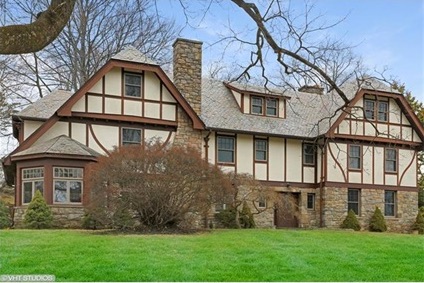 It's rare that Scarsdale's Committee for Historic Preservation agrees to deny a demolition permit for a home in Scarsdale and even rarer when they vote to preserve two homes at their monthly meeting.
It's rare that Scarsdale's Committee for Historic Preservation agrees to deny a demolition permit for a home in Scarsdale and even rarer when they vote to preserve two homes at their monthly meeting.
The Village's criteria for preservation are strict and as Committee Chair Paul Diamond and William Silverman claimed, under it's new preservation laws, the criteria to preserve homes are even stricter than the criteria set by New York State or the National Register.
Here are the criteria for preservation as set forth in Village code:
In making a determination whether to grant an application for a certificate or to deny such application and require that the building in question be preserved, the Committee shall consider the level of significance in American history, architecture, archeology, engineering and culture present in the building, as well as the integrity of location, design, setting, materials and workmanship, and
(1) That the building is associated with events that have made a significant contribution to broad patterns of Village, regional, state or national history; or
(2) That the building is associated with the life of a person or persons of historical significance; or
(3) That the building is the work of a master and embodies the distinctive characteristics of a type, period or method of construction that possess high artistic values; or
(4) That the building has yielded or may be likely to yield information important in prehistory or history.
B. The Committee may consider if the building is listed on the National Register of Historic Places, New York State Register of Historic Places or Westchester County Inventory of Historic Places. A national, state or county listing alone is not sufficient to warrant preservation.
However at their July 21st meeting, after considerable deliberation, the Committee voted to deny demolition to two homes: the first was a Collett-built Tudor home at 11 Carstensan Road, built in 1925, and the second was an arts and crafts style home at 1023 Post Road that was featured in the Historic Resources Survey.
The application to demolish 11 Carstensan Road was filed by owner Lin Chen Tien and signed by architect Bana Choura who is also a member of the Committee for Historic Preservation.
Tien claimed that the home was not built by Collett and could not be preserved on those grounds, as the Village records erroneously stated the house was built by a different builder; however committee member Alan Steinfeld displayed a copy of the original building permit which showed that the home was built by Walter Collett. The committee then discussed whether or not Collett, who built 300 homes in Scarsdale, could be called a master. Diamond read passages from a letter sent to the committee by neighboring residents on Carstensan who said, "We have lived at 20 Carstensan since 2007. Collett was known for the quality of materials and workmanship....a Collet-built home is a badge of quality, workmanship and architectural significance... the existing house is an example of Collett's work ...The unique beauty of the street is due to so many of his homes in one location. Carstensan Road is the developer's legacy. Cartensan Road is the best example of his work and is a permanent and distinctive imprint on the face of Scarsdale. Collett lived in Scarsdale from 1923-42 built 300 custom homes. His own home was at 2 Carstensan Road. The demolition of 11 Carstensan would be the loss of a distinctive Tudor home."
Tien, the homeowner argued, "He did not design it. And 10 and 12 Carstensan Road were subdivided and built new in the 1990's. The whole street is Tudor style but there are a lot of newer homes."
Diamond then read another letter that said, "The home was designed for attorney William Haines by architect Walther on a street designed by Collett. Collett designed the street to be built as a rambling country lane. If the house were torn down the lot could be subdivided and two homes could be built." Diamond also showed a photo of the home that appeared in a 1931 book about Collett homes.
Diamond recounted a conversation he had with Andrew Dolkart who is the Director of Preservation at the Columbia Architecture School of planning and preservation. Dolkart established Collett as an important local figure and said 11 Carstensan embodies the type of house that was built in Scarsdale at that time.
Village historian Lucas Meyer said, "Given the quality of the construction and the association with Collett I would be against it coming down."
Architect Bana Choura then spoke but when it was revealed that she was the architect who signed the demolition application, she was recused from the conversation and the vote.
Committee member Alan Steinfeld questioned whether or not Collett was a master, but went on to say, "Cartensan Road is the first neighborhood to be completed under Collett's direction. He was an important builder and laid out homes and neighborhoods that gave Scarsdale its character for decades. It should be preserved under the criteria that says, "That the building is associated with events that have made a significant contribution to broad patterns of Village, regional, state or national history." He added, "It is important to maintain the integrity of the street."
Committee member Joyce Hirsch said, "The house contributes to a pattern of history."
Diamond said, "I feel that it should be saved as well. I think Collett is a master based on the criteria."
Barbara Jaffe said, "Though the process of tearing down Carstensan has already begun, Collett exemplifies Scarsdale. His work represents the time and the period."
Bill Silverman said, "If we can't save this house under this criteria than we can't save any houses. We are preserving it because of architectural quality. If we tear this down, the neighborhood will be destroyed. Of all the houses we see this is a very special house. Look at the windows, the stonework ... it is more distinctive than any we have seen this year. I vote to preserve it under criteria one and three. Carstensan the first road to be completed under the organization. Committee member John Cromwell concurred with Silverman.
Associate Village Historian Jonathan Lerner told the committee, that the property was originally a farm with an apple orchard purchased by the Collett Corporation from Lewis Popham. Lerner believed that this also made the property historic.
Builder Bobby Ben Simon then addressed the committee. He said, "I don't think it rises to the level.... You have the highest responsibility here. You are stepping into someone's house. She owns the house. You are not addressing the guidelines.
When you are about to make a decision about someone else's property you better have the highest standards – and you do not have it. You need to think long and hard before you make that decision on someone's property."
Silverman replied, "This is one of the few houses that meet the strict criteria we have been given."
The homeowner also continued to state her case. She said, "Everything you concluded is based on the decision that this was built by Walter Collett. I am going to challenge the authenticity of everything I heard tonight. So how do we put any credential or credibility on that paper? I am going to assemble a team to challenge it."
She then took another approach and argued, "I can't keep it up. You are supposed to consider the economics. It is over 100 years old – it is hard to keep up! The criteria is arbitrary. The committee's interpretation of each criteria is arbitrary."
A motion was made to find the property of historic significance. The committee voted and five members supported preservation on criteria #1 and #3, with one member voting for preservation on criteria #1.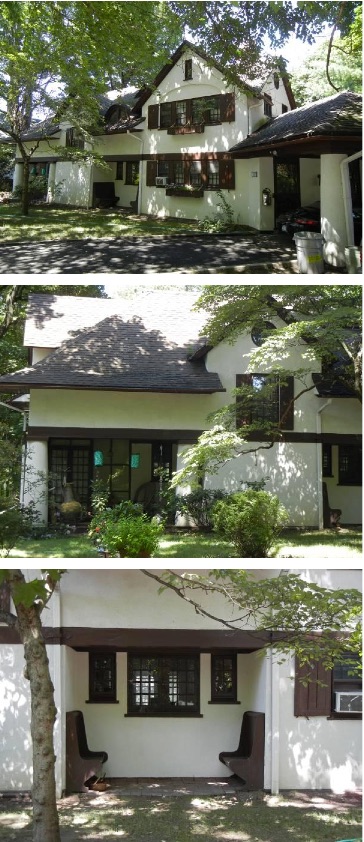
The group then turned to a discussion of two homes on the Post Road. The properties at 1023 and 1025 Post Road were presented by builder Matt Miller. He began with an impassioned speech about his love for Scarsdale and a plea for the Committee to be open minded as demolition of one of the homes had been previously denied.
The house at 1023 Post Road is an arts and crafts style home built in 1910. The home was featured in the Historic Resources Survey of the village completed in 2012. The report notes the stucco home's "homey" features, benches, built-in alcove on the façade, porte cochere, arched dormers and round gable window."
Historian According to Diamond, Dolkart believes the home embodies the period and meets the criteria for historic significance.
In the discussion that followed, Joyce Hirsch noted that since the home is not visible from the Post Road she was not "sure what it added to the community." Silverman said, "Our only job is to apply this limited criteria. This is the most distinctive example of this style of architecture." Bana Choura said, "The placement of the home has nothing to do with it. We have to vote to preserve it. If we don't save this, they are gone."
The owner, Matt Miller objected, saying, "Look at the house – is this the work of a master? Is this a great house? Would you want to move into it? Is it worthy of saving? I am hearing you say this a magnificent house? It's not a nice road!"
The committee then voted and agreed to deny the demolition application.
However, the night was not a total loss for builder Matt Miller who did receive approval to demolish the adjacent property at 1025 Post Road, built in 1907.
The committee also cleared the way for demolition of homes at the following addresses:
- 21 Rectory Lane, Application from Bobby Ben Simon
- 110 Brewster Road – Application from Joe Daniels
- 30 Tunstall Road – Presented by Mary Scott
- 56 Hampton Road – Application from Sarah Kaspers
Diamond told both Tien and Miller that they do have the right to an appeal to the Board of Trustees. So we may not have heard the end of the discussion yet.










